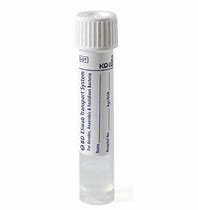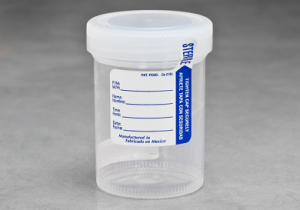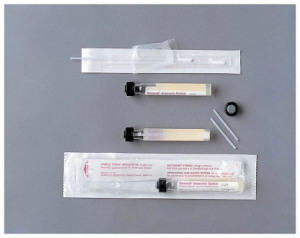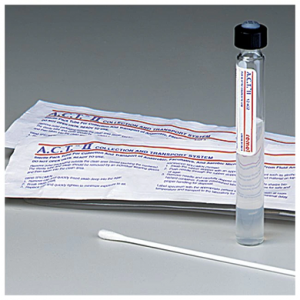Culture for Fungus on Wound and Respiratory Cultures
POWERCHART ORDER -Fungal Culture Wound/Respiratory
Useful For
Localized and systemic infections with filamentous fungi, as well as yeasts, can occur throughout the body, especially in immuno-compromised individuals. Recovery of these pathogens is necessary for proper diagnosis and treatment. The types and quality of the specimens submitted are an important factor in the successful isolation and identification of the etiological agents of fungal infections. The most important factors for the successful isolation of fungi are proper collection of specimens, rapid transport of the specimens to the laboratory, prompt and correct processing of these specimens, inoculation of the specimens to appropriate media and incubation at suitable temperatures.
Method Name
Culture
Aliases
Fungus Culture Wound, Fungus Culture Respiratory, Fungus Culture Wound/Respiratory
Specimen Type
SPECIMENS:
The following specimen types may be submitted for the recovery of filamentous fungi:
- Aspirates of sterile body fluids
These specimens should be obtained aseptically by the physician with a needle and syringe. Specimens should be transferred to a clean sterile leak proof specimen container (jar, A.CT. tube, STAR SWAB tube) for transport to the laboratory. Specimens submitted in syringes are not acceptable.
- Tissue and biopsy specimens
Tissue specimens should be collected via surgical procedure, biopsy or debridement. They should be placed in a clean sterile container and transported to the laboratory as soon as possible after collection. A small amount of sterile saline may be added to prevent desiccation of small specimens.
- Lower respiratory specimens
Expectorated sputum or bronchial washings may be submitted in a clean sterile leak proof container. Transport to the laboratory as soon as possible after collection.
- Ocular material
Corneal scrapings may be taken by the physician and plated directly to mycology media at the site of collection. Alternatively, material – such as exudates – may be sampled with a sterile E-swab or culturette collection and transport device.
- Specimens from the ear
Samples from the outer ear canal, or from drainage material may be taken with E-swabs or culturette swabs. Specimens from the middle or inner ear require aspiration with a needle and syringe and should be treated in the same manner as sterile body fluids.
- Aspirates, exudates and drainages
Various other materials may be collected from wounds, draining sinus, abscesses, etc. Collection methods vary with the type of material to be collected. Aspirates of closed wounds and abscesses require collection with needle and syringe – as for sterile fluids. Other open wounds or drainage materials may be collected with an E-swab or Culturette swab.
Specimen Required
- Aspirates and respiratory specimens in a clean, sterile, leakproof container.
- Tissue should be submitted in a clean, sterile, leakproof container with some sterile saline added for hydration.
- Swabs should be submitted in Culturettes or E-swabs.
- Specimens submitted in E-swabs, Culturette swabs, A.CT. Tubes, STARSWAB tubes or on mycology media are stable for up to 48 hours.
- Specimens submitted in containers without transport medium should be transported to the laboratory as soon as possible, optimally within 2 hours of collection.




Specimen Minimum Volume
1 mL or 1 swab
Specimen Stability Information
- Transport at room temperature.
- Aspirates, tissue and respiratory specimens must be received within 2 hours of collection.
- Culturette, E-Swabs swabs are stable for 48 hours after collection.
*NOTE* Specimens that do not meet the above criteria will be rejected.
Rejected Due To
- Not transported at room temperature.
- Aspirates, tissue and respiratory specimens not received within 2 hours of collection.
- Culturette, E-Swabs swabs received greater than 48 hours after collection.
Special Instructions
Specimens must be labeled with complete source and body site information.
Exam includes direct smear (gram stain).
Specimens are held for a 4 week incubation period and are screened for all types of fungal growth.
Requests for fungal susceptibility testing require submittal of the isolate(s) to a reference laboratory.
The physician must specify the antifungal agents to be tested.
NOTE: Urine, urogenital specimens and upper respiratory specimens (mouth, nose & throat) are screened for growth of yeast only, unless specially requested to look for other fungi, and should be ordered as Fungus Culture -Yeast.
Specimens collected to rule out Dermatophytes (Ringworm (skin/hair/nails)) should be ordered as Fungus Culture Hair Skin and Nails
Stool/rectal specimens are NOT accepted for fungal culture.
Performing Laboratory
Glens Falls Hospital Microbiology Laboratory
Day(s) and Time(s) Performed
- Day shift
- Weekly after inital 3 day screening
Analytical Time
4 weeks
Specimen Retention Time
72 hours
Analytical Time
4 weeks
